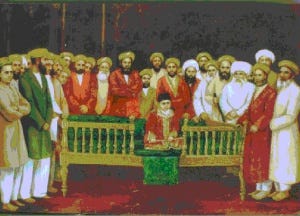Esoteric Apocalypse (Qiyamah): Isma‘ilī Muslim Perspectives on the “End of the World” (Part 2)
“All of these changes suggest that we are moving into a new epoch of history, a new condition of human life.”
– Imām Shāh Karīm al-Husaynī Āgā Khān IV
“We, the Imāms in descent from Imām Husayn, are present until today and we shall remain until the Qiyāmah and even after the Qiyāmah.”
– Imam Āgā Shāh ‘Alī Shāh Āgā Khān II
This post continues from Part 1 – E…




